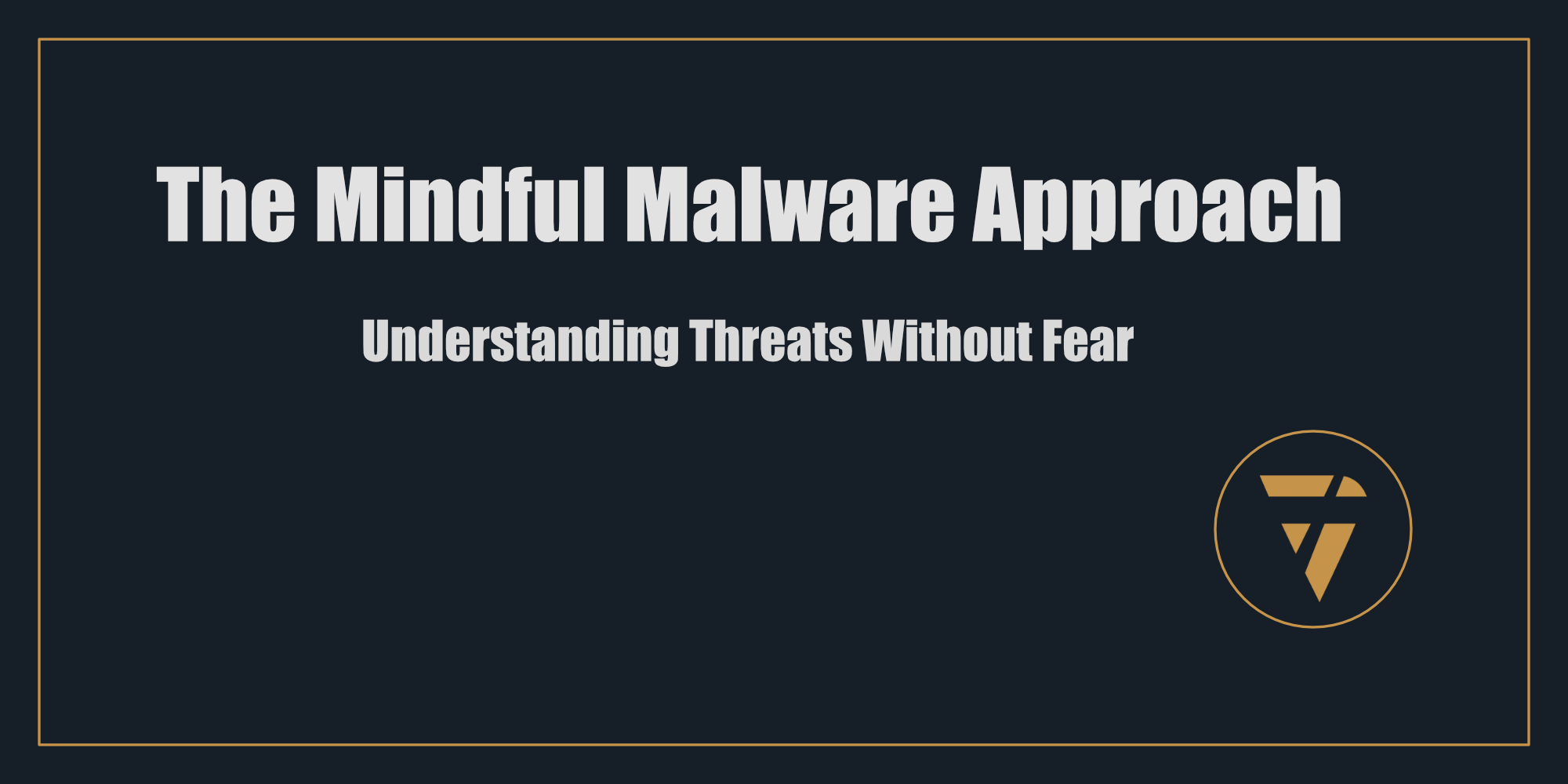The Mindful Malware Approach
Understanding Threats Without Fear

Cyber threats are everywhere—phishing emails in your inbox, ransomware lurking in shady downloads, and vulnerabilities you didn’t even know existed. For engineers, the pressure to protect systems while staying ahead of evolving threats can feel like a never-ending battle. Fear becomes the default response, driving rushed decisions, tunnel vision, and burnout.
But what if we approached cyber threats with a different mindset? Instead of reacting out of fear, we could learn to observe, analyze, and respond with clarity. This is the essence of the Mindful Malware Approach—a way to understand and manage threats without panic, turning fear into focused action.
Here’s how mindfulness principles can transform how engineers navigate the chaotic world of cybersecurity.
Fear: The Real Virus
Fear is the first thing malware exploits. When you receive a phishing email marked “URGENT: Your account has been compromised,” fear triggers a knee-jerk reaction to click. Malware thrives on this fight-or-flight response, bypassing your logical defences.
In cybersecurity, fear clouds judgment. It narrows your focus, leading to rash decisions like shutting down entire systems unnecessarily or overlooking subtle clues in an attack vector. Mindfulness offers an antidote: calm awareness that allows for measured, effective responses.
The Mindful Malware Mindset
Observation Over Reaction
When a threat arises, pause. Don’t immediately escalate or implement drastic measures. Observe the situation from a place of curiosity.
Ask yourself: What do I actually know about this threat? What assumptions am I making?
Mindfulness Practice: Try a 30-second pause before responding to any alert. Breathe deeply, ground yourself, and approach the problem like a puzzle, not a crisis.
Detach from Urgency
Cybersecurity threats often come with a sense of urgency designed to provoke hasty actions. Recognize urgency for what it is—a tactic.
Detachment doesn’t mean ignoring the problem; it means creating mental space to assess it rationally.
Mindfulness Practice: Repeat this mantra when faced with a high-pressure threat: “Urgency is their strategy, calm is mine.”
Applying Strategic Calm to Threats

Here’s how the Mindful Malware Approach works in real-world scenarios:
Phishing Emails
- Fear Response: “Oh no, my bank account is compromised! Click immediately!”
- Mindful Malware Approach: Pause. Hover over the link. Check the sender’s address. Ask, “Does this message feel off in any way?”
Ransomware
- Fear Response: “Shut down everything!”
- Mindful Malware Approach: Quarantine the affected system. Assess the spread calmly. Strategize containment and recovery with your team instead of spiraling into panic.
Zero-Day Vulnerabilities
- Fear Response: “How could we miss this? We’re doomed!”
- Mindful Malware Approach: Recognize that no system is invincible. Focus on immediate mitigation while learning from the experience to strengthen future defences.
Turn Fear into Focused Action
Reframe the Narrative
Instead of viewing threats as attacks, see them as opportunities to strengthen your system.
Every breach teaches you something about your vulnerabilities and how to address them.
Stay Present in the Process
Cybersecurity isn’t about eliminating all threats—it’s about responding effectively to the ones that arise. Focus on the present task instead of worrying about worst-case scenarios.
Build a Culture of Calm
Encourage your team to adopt the Mindful Malware Approach. Discuss threats openly, without blame or panic, to create a culture of learning and improvement.
The Mindful Malware Toolkit
Breathe Before You Act: When you feel panic rising, take three deep breaths. This simple act slows your heart rate and clears your mind.
The 3-Q Framework: Ask yourself three questions when faced with a threat:
What’s happening right now?
What’s the worst-case scenario—and how likely is it?
What’s my next best step?
Debrief, Don’t Blame: After handling a threat, conduct a non-judgmental review. What worked? What didn’t? How can the process improve?
Mindfulness as a Cybersecurity Superpower
In the world of cybersecurity, threats are inevitable. Fear doesn’t have to be. By adopting the Mindful Malware Approach, engineers can navigate even the most complex attacks with clarity and confidence.
This isn’t just about better responses; it’s about reclaiming your mental well-being in a high-stress field. Because the most powerful security system isn’t made of firewalls and encryption—it’s a calm, focused mind.
Your Challenge
This week, practice mindfulness in the face of small threats:
- When you receive a phishing email, don’t delete it immediately. Study it to learn what clues gave it away.
- When debugging code, notice your mental state. Are you rushing? Panicking? Take a breath and approach it methodically.
- Reflect on a past cybersecurity incident. What would you do differently with the Mindful Malware Approach?
What’s Your Take?
How do you stay calm and focused when faced with cyber threats? Share your techniques, or connect directly. Let’s build a cybersecurity culture rooted in clarity, calm, and mindfulness—together.
This Substack is reader-supported. To receive new posts and support my work, consider becoming a free or paid subscriber.
This is what I’m working on. Tell me what you think, I enjoy the conversation! Subscribe and follow the work in real time.
Thanks!
B
Cyber threats thrive on fear. Pause, observe, and respond with clarity. The calmest mind is the most secure system. Practice the Mindful Malware Approach.
PS -






